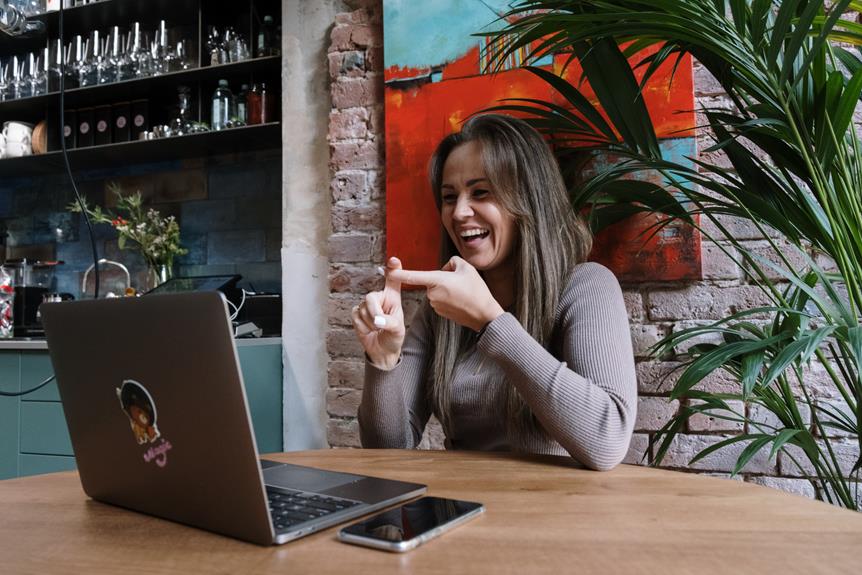Did you know that up to 93% of communication is nonverbal?
Nonverbal communication is an incredibly powerful tool that allows us to express ourselves without words.
In this article, we'll explore what nonverbal communication is, the types of nonverbal cues we can use, how to understand and interpret nonverbal cues, and how to practice using nonverbal communication.
Get ready to unlock the power of nonverbal communication today!
The Benefits of Nonverbal Communication
You can benefit greatly from nonverbal communication. Utilizing body language and facial expressions, you can convey emotions and messages more effectively. It helps to reduce misunderstandings and miscommunications by providing an extra channel to communicate.
Nonverbal communication is also a great way to express yourself without relying solely on language. It can help facilitate understanding and open up a dialogue between people.
Nonverbal communication can be used to build trust, empathy, and connection, allowing for more meaningful conversations and relationships.
Types of Nonverbal Communication
Often, you'll find nonverbal communication in the form of facial expressions, body language, gestures, posture, and more. It's an effective way to express emotions and silent signals without words.
Nonverbal communication can be used to build trust, create a rapport, and establish a connection. It can also be used to show agreement, disagreement, and even dominance. When used skillfully, nonverbal communication can be a powerful tool of liberation.
Knowing how to read and interpret nonverbal cues can help you gain insight into others' feelings and intentions.
Understanding Nonverbal Cues
Being able to interpret nonverbal cues is essential for understanding other people's feelings and intentions. Facial expressions, body language, and other nonverbal cues can provide insight into an individual's real desires and feelings.
This can be incredibly beneficial in interpersonal communication, as it can allow for greater understanding on both sides. With this understanding comes greater empathy, connection, and liberation.
Paying attention to nonverbal cues can help us better understand one another and create relationships rooted in trust and understanding.
Reading Nonverbal Cues
By observing the subtle nonverbal cues of others, you can gain an understanding of their feelings and intentions. Reading nonverbal cues helps us to interpret the underlying meaning of a message. It's important to consider the cultural context when reading body language.
- Pay attention to facial expressions, posture, and gestures.
- Monitor the other person's tone of voice and rate of speech.
- Assess the level of eye contact and physical distance.
Practicing Nonverbal Communication
Are you aware of the advantages of nonverbal communication, and how can you use them?
Practicing nonverbal etiquette and body language can help you become more aware of how you communicate with others. It can also help you become more confident and articulate in your interactions.
Nonverbal communication can help you express yourself in a more meaningful and authentic way. By becoming more mindful of your nonverbal cues, you can also cultivate a sense of liberation and freedom in your communication.
Frequently Asked Questions
What Are the Potential Risks of Using Nonverbal Communication?
Using nonverbal communication can pose potential risks, such as misinterpretations of body language or facial expressions. This can lead to misunderstandings, which could lead to hurt feelings or even conflict. Be mindful of context and your audience to avoid such risks.
How Can Nonverbal Communication Be Used to Build Relationships?
By engaging in body language and eye contact, you can effectively build relationships. Use these nonverbal cues to convey feelings and emotions, connect with others, and communicate support and understanding. When done authentically, nonverbal communication can create a powerful bond between people.
How Does Nonverbal Communication Differ Across Different Cultures?
"Actions speak louder than words" – nonverbal communication can differ greatly across cultures. Cross-cultural variations in nonverbal behavior can be attributed to cultural norms, values and beliefs. Analyze how these differences can liberate different people, and help build meaningful relationships across cultures.
How Can Nonverbal Communication Be Used to Interpret Emotions?
Interpreting emotions through nonverbal communication, like body language and facial expressions, allows us to better connect with each other. It can help us better understand how someone is feeling, and how to respond in a way that is liberating and empowers all involved.
What Are the Most Effective Ways to Use Nonverbal Communication in the Workplace?
You can use nonverbal communication in the workplace to effectively convey emotions and messages through body language and visual cues. Unlocking the power of these tools can liberate your communication, providing a vivid and organized analysis of your message.
Conclusion
Nonverbal communication can be a powerful tool in understanding others and expressing ourselves. By learning the various types of nonverbal cues, and practicing reading and expressing them, we can gain a better understanding of the people around us.
At the end of the day, it's all about being able to read between the lines and pick up on the subtle messages that aren't spoken. After all, actions speak louder than words.

